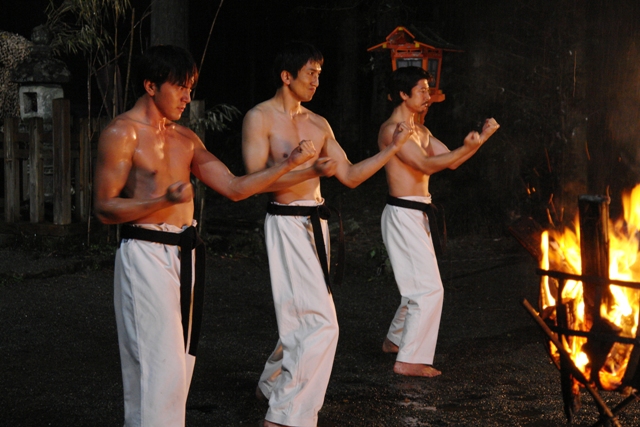Heishugata & Tension
Most casual practitioners may wonder what heisugata and kaishugata are and how they help us develop our Karate. Goju Ryu is unique in the fact that in the basic curriculum there are only 12 kata, of which, two are categorized as heishugata and the remaining ten katas are considered kaishugata. Now, its only fair for me to list those, but many of you may already know which is which.
Heishugata
- Tensho
Kaishugata
- Gekisai 1
- Gekisai 2
- Saifa
- Seiunchin
- Sanseiru
- Shisochin
- Seipai
- Seisan
- Kururunfa
- Suparimpei (Pechurrin)
- This kata is done differently than you see on YouTube as most are shown in competition.
- Other ryuha such as Shotokan have developed derivatives to adjust to their style.
- Called Hyakuhachiho but in competition may be announced as Suparimpei
While Goju Ryu may not have the impressive selection of kata choices that Shotokan or Shito Ryu offers, Goju Ryu focuses on the 12 above. Other Kaiha (styles or organizations) within Goju may have developed other kata, training katas, or kata variants depending on the lineage (such as Gekiha (Shorei Kan) or Taikyoku Series (Yamaguchi) kata) but also focus on the above as well. Many of the kata above, you will see in other Ryuha such as Seiunchin, Seisan, and Kururunfa, which are interesting variants to study. One thing that I would like to point out is that none of those variants are incorrect, however, there is a depth of understanding the kata and executing the techniques intended by Miyagi Chojun and other Goju forefathers is where the deep understanding comes to life and makes studying the twelve Goju katas very meaningful.
When training kata we may or may not hear the terms Heishugata or Kaishugata. The funny thing is that if you are at the level where Sanchin and Tensho are mandatory, then you have already begun your understanding of the difference.
Miyagi Chojun taught both Sanchin and Tensho as Heishugata. While some instructors may breakdown Heishugata as "Closed Hand Kata," as a practitioner just learning Tensho may be confused when told that Tensho is a "Closed Hand Kata" especially when most techniques are open handed.
The depth of the Heishugata inteded for pratitioners to understand is not if your hands are open or if they are closed. Heishugata concentrates on the continuous tension required for the kata. Sanchin was developed for the"GO" aspect or the HARD aspect in Goju, and Tensho later developed to represent the "JU" or the SOFT aspect of our art. However, just becuase it is hard and soft, this alone doesn't dictate the reason why they are both Heishugata.
Between the two Heishugata in Goju, the best way to describe how tension is held to a beginner, is through the manipulation of tension and muscle memory to acheive a style of body hardening (I think of the image of how a hammer strikes an anvil or pistons when senseis check for tension). Senseis will be looking at key areas including our core, gluts, traps, lats, quads, hams, all the way down to our toes to see where our tension lies. A veteran will be able to harness the tension and sync it with their breathing in order to complete the execution of the kata, especially in Sanchin.
Tensho is a different animal. While the techniques are mainly open handed, your body reacts similarly to that of Sanchin but different in the thought of tension. While the central mass tension is very similar, arm and leg tension is closer to that one squeezing water out of a wet cloth. Kiyohara Sensei explained it very clearly to me in Japanese. He used two specific terms when describing tension in Tensho. "Nebari" and "Shiboru" are the two terms he used quite often. In simple terms, "Nebari" tension has a viscosity aspect to it. Think of your "sticky hands" training (if you don't know what "sticky hands" training is consult your sensei) "Shibori" tension is more of a wringing, squeezing and pressing sensation. Both types of tension in Tensho are important concepts that must be understood in order to understand the depth of the kata.
So fundementally, both Heishugata are designated by the continual tension that must be applied, learning how to intesify and learning how to relax without losing all of the tension to execute the kata is part of the training that permeates down to basics all the way through Kaishugata, where tension is adjusted to the flow and execution of the techniques involved.
If people are interested in learning more about the flow and applying tension in Kaishugata, please let me know. I can have another post for that specific topic and we can concetrate on a single Kaishugata at time like if we were breaking down the kata during bunkai.










